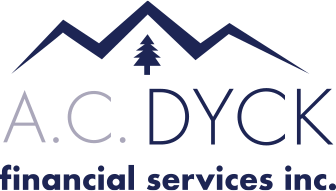Over my 30 years as a Certified Financial Planner, many people asked me what type of behavioral things people can make that will make a big difference to one’s financial future. Today’s blog features a real story about how a nasty divorce has a very bad outcome for everyone concerned, except for the legal types and the inevitable personal counselors!
What to avoid in a divorce to prevent financial harm
MARIYA POSTELNYAK
PUBLISHED APRIL 30, 2023UPDATED MAY 1, 2023
The tone of divorce proceedings runs the gamut from cordial to downright cruel. But while feelings of anger are common, attempts to inflict financial harm on a spouse will backfire – and can prove very costly for those who try, lawyers say.
“People will sometimes fail to disclose assets, they’ll try to hide them and play games with the value, or they’ll hide money offshore,” says Andrew Feldstein, a lawyer at Feldstein Family Law Group. “T
here’s always an element of power and control that takes place between former spouses and finances is the element that bleeds into power.”
In April, a couple in Australia made the news for finalizing their 11-year-long divorce after both spouses consistently refused to provide a complete picture of their finances. And there’s no shortage of infamously difficult divorces in Canada. Take the case of Bruce McConville, an Ottawa man who claimed he burned about $1-million in savings to avoid giving it to his spouse amid divorce proceedings.
Lawyers say cases where a spouse hides or diverts funds are far from uncommon. “I have a case right now where the opposing side earns an income of close to $300k, and on review of financials it was uncovered that he hasn’t been depositing the entirety of his pay into joint funds,” says Laura Paris, associate lawyer at Shulman & Partners LLP. “We’ve been unable to trace where the funds could be.”
Ms. Paris cautions against using such questionable methods. “When there’s no viable reason that the money is being transferred, the court will err on the side of assuming that it was being done for precarious purposes,” Ms. Paris says. Under such circumstances, it would be justified to make a claim for an unequal division of family property, she says.
Why some couples stay married for the benefits
And when a spouse is found to be hiding or deceiving the court about their finances, they’ll end up on the hook for the person’s costs and for the cost of the proceedings, Ms. Paris says. In one case she had, there was a 17-day trial and it was not until representatives from the bank provided statements that she found over $1.5-million that was never disclosed over five years of litigation. Ms. Paris won the case and her client’s spouse was ordered to pay over $400,000 in costs, including her client’s legal fees.
Despite the risks, some spouses will ask lawyers for help in inflicting financial damage on their partners. That’s come up for Ms. Paris, who says she avoids such cases. “If clients are asking us to deliberately try and hide money or advise us that their intention is to hide money or avoid their obligations, pursuant to our code, those are not clients we should take on.”
In Canada, couples seeking a divorce are legally required to disclose their financial assets. “Under the Family Law Act, you have to provide a financial statement whenever you start a court application that deals with property,” Mr. Feldstein says.
In Mantella v. Mantella, the court ordered a husband to pay more than $2,000 every day after he failed to disclose finances in a bitter divorce battle. “Ultimately, that fine got to six figures,” Mr. Feldstein says. “When you play these games of what I call, ‘Catch me if you can,’ things become long and expensive.”
Judges can also penalize parties for what they see as egregious behaviour. “If one or both parties are trying to attack one another, adverse inferences can be drawn against people in litigation,” says Zack Liquornik of Liquornik Family Law.
The verdict: acting out of spite will not be in anyone’s best interest. “As far as money issues go, both parties need to be honest,” Mr. Liquornik says. Being transparent about finances will not only help litigants avoid being penalized in court, it will also ensure that cases don’t drag out longer than they need to.
